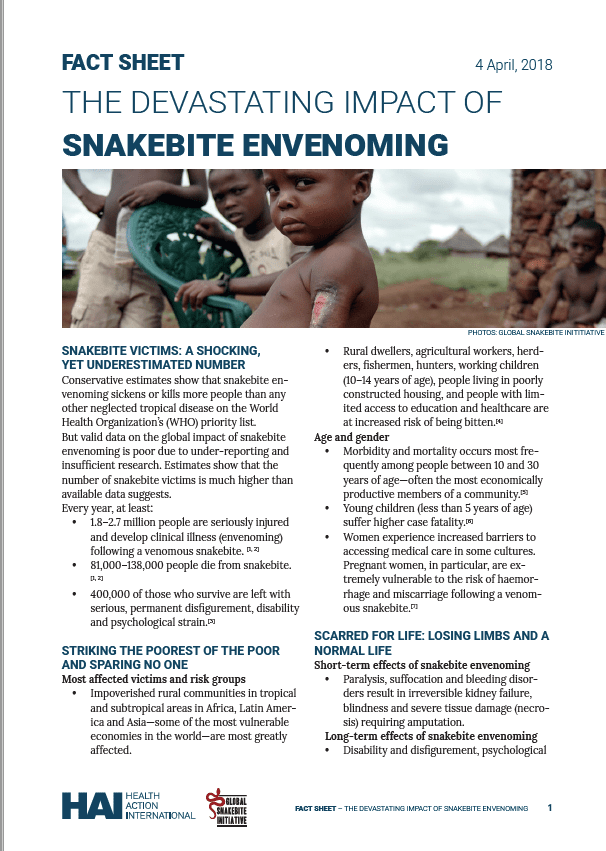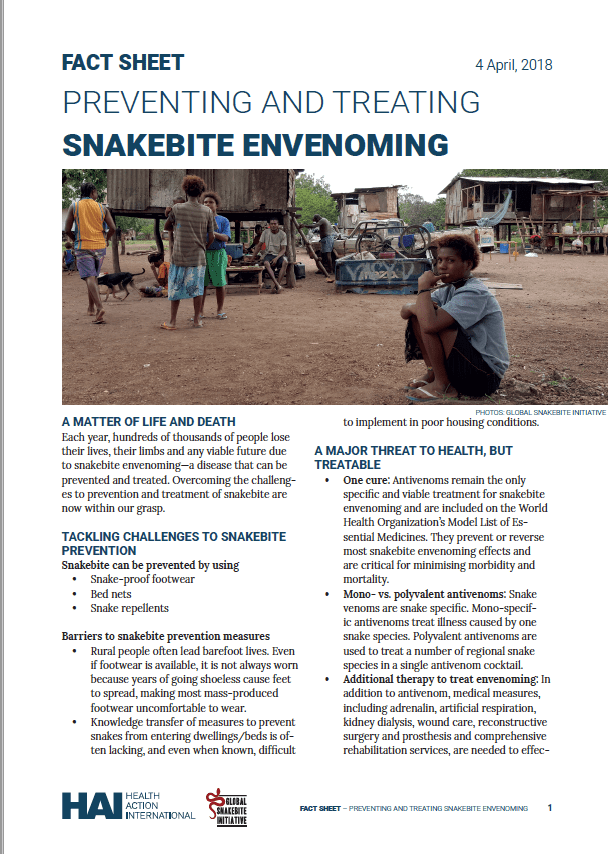Become a donor or member and support our work to advance access to medicines. For everyone. Everywhere
Almost the entire tropical world is endemic of snakebite, but has limited or no monitoring mechanism in place to record and measure the actual scale of the problem.
Nonetheless, conservative estimates show that snakebite envenoming sickens or kills more people than any other neglected tropical disease on the World Health Organization’s (WHO) priority list. Scientific studies indicate that, every year, at least:
- 1.8–2.7 million people are seriously injured and develop clinical illness (envenoming) following a venomous snakebite.
- 81,000–138,000 people die from snakebite.
- 400,000 people are permanently disabled and often left with psychological strain.
One of the objectives of the HAI Snakebite Programme is to improve the data by gathering evidence from health facilities on snakebite incidence rates, as well as the price, availability and affordability of antivenom in Kenya, Uganda and Zambia. The findings will inform snakebite advocacy efforts at the local, national, regional and global levels, aiming for improved snakebite prevention measures and increased access to safe, effective, affordable and quality-assured antivenom and other clinical treatment.
 FACT SHEET: The Devastating Impact of Snakebite Envenoming
FACT SHEET: The Devastating Impact of Snakebite Envenoming
 FACT SHEET: Preventing and Treating Snakebite Envenoming
FACT SHEET: Preventing and Treating Snakebite Envenoming
 INFOGRAPHIC: The Burden of Snakebite
INFOGRAPHIC: The Burden of Snakebite